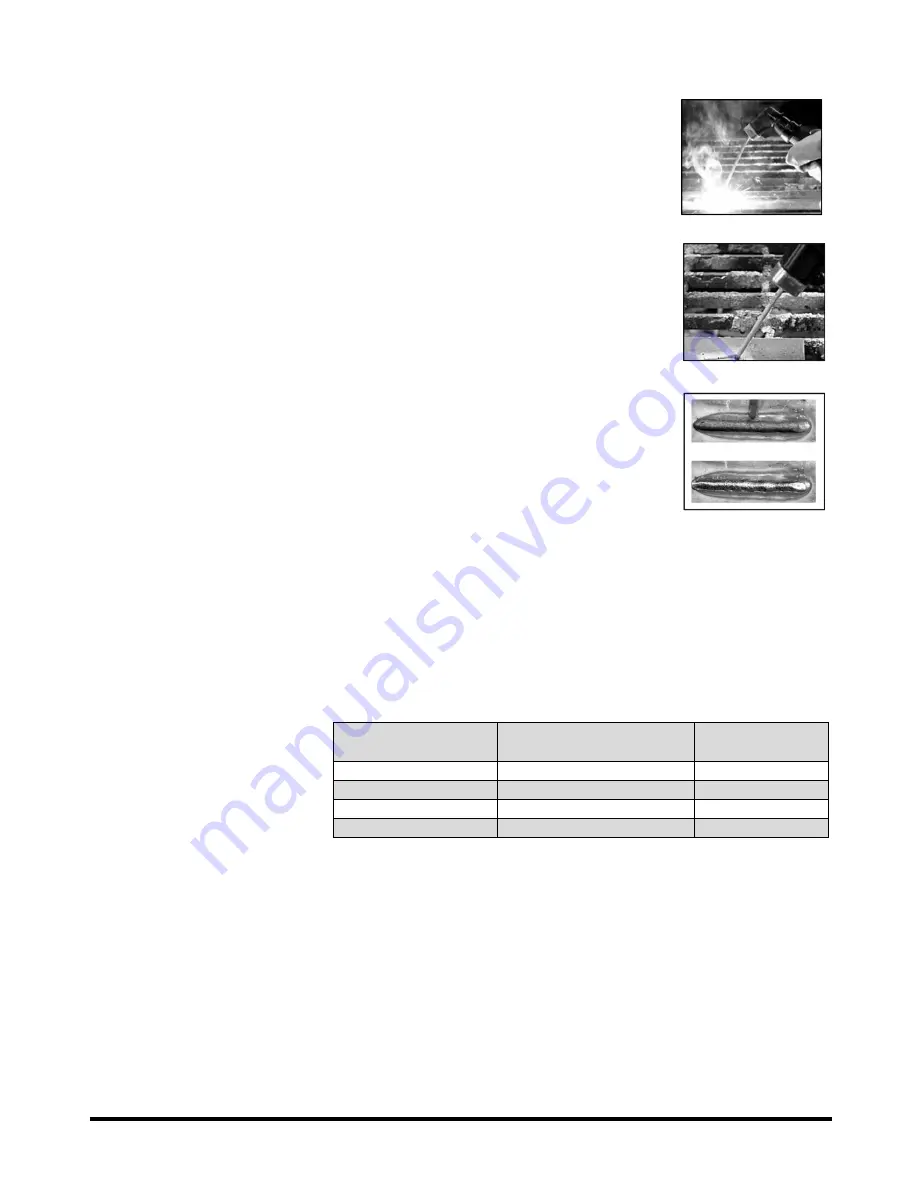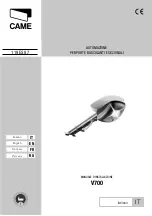
8611311
180 MULTI-PROCESS MIG-ARC-TIG WELDER
V1.0
18
For technical questions call 1-800-665-8685
6. Hold the electrode slightly above the workpiece to maintain the arc while travelling at an
even speed to create an even weld deposition (Fig. 24)
7. To finish the weld, break the arc by quickly snapping the electrode
away from the workpiece (Fig. 25).
8. Wait for the weld to cool and carefully chip away the slag to reveal the
weld metal underneath (Fig. 26).
Manual metal arc (stick) electrodes have a solid metal wire core and a
flux coating. These electrodes are identified by the wire diameter and by
a series of letters and numbers. The letters and numbers identify the
metal alloy and the intended use of the electrode.
The metal wire core works as a conductor of the current that maintains
the arc. The core wire melts and is deposited into the welding pool.
The covering on a shielded metal arc welding electrode is called flux. The
flux on the electrode performs many different functions:
• producing a protective gas around the weld area.
• providing fluxing elements and deoxidizers.
• creating a protective slag coating over the weld as it cools.
• establishing arc characteristics.
• adding alloying elements.
Covered electrodes serve many purposes in addition to adding filler
metal to the molten pool. These additional functions are provided
mainly by the covering on the electrode.
ARC (STICK) WELDING FUNDAMENTALS
ELECTRODE SELECTION
As a general rule, the selection of an electrode is straight forward, in that it is only a matter of
selecting an electrode of similar composition to the parent metal. However, for some metals there
is a choice of several electrodes, each of which has particular properties to suit specific classes of
work. It is recommend to consult your welding supplier for the correct selection of electrode.
ELECTRODE SIZE
The size of the electrode
generally depends on the
thickness of the section being
welded and the thicker the
section the larger the electrode
required. The table gives the
maximum size of electrodes
that maybe used for various
thicknesses of section based on using a general purpose type 6013 electrode (See Table 2).
WELDING CURRENT (AMPERAGE)
Correct current selection for a particular job is an important factor in arc welding. With the
current set too low, difficulty is experienced in striking and maintaining a stable arc. The
electrode tends to stick to the work, penetration is poor and beads with a distinct rounded
profile will be deposited. Too high current is accompanied by overheating of the electrode
resulting undercut and burning through of the base metal and producing excessive spatter.
Normal current for a particular job may be considered as the maximum, which can be used
without burning through the work, over-heating the electrode or producing a rough spattered
surface. The table shows current ranges generally recommended for a general purpose type
6013 electrode (see Table 2).
AVERAGE THICKNESS
OF MATERIAL
MAXIMUM RECOMMENDED
ELECTRODE DIAMETER
CURRENT RANGE
(AMPS)
0.03 to 0.07 in.
0.09 in.
60 to 100A
0.07 to 0.19 in.
0.12 in.
100 to 130A
0.19 to 0.31 in.
0.15 in.
130 to 165A
0.31 in. greater
0.19 in.
165 to 260A
Table 2
Fig. 24
Fig. 25
Fig. 26
















































